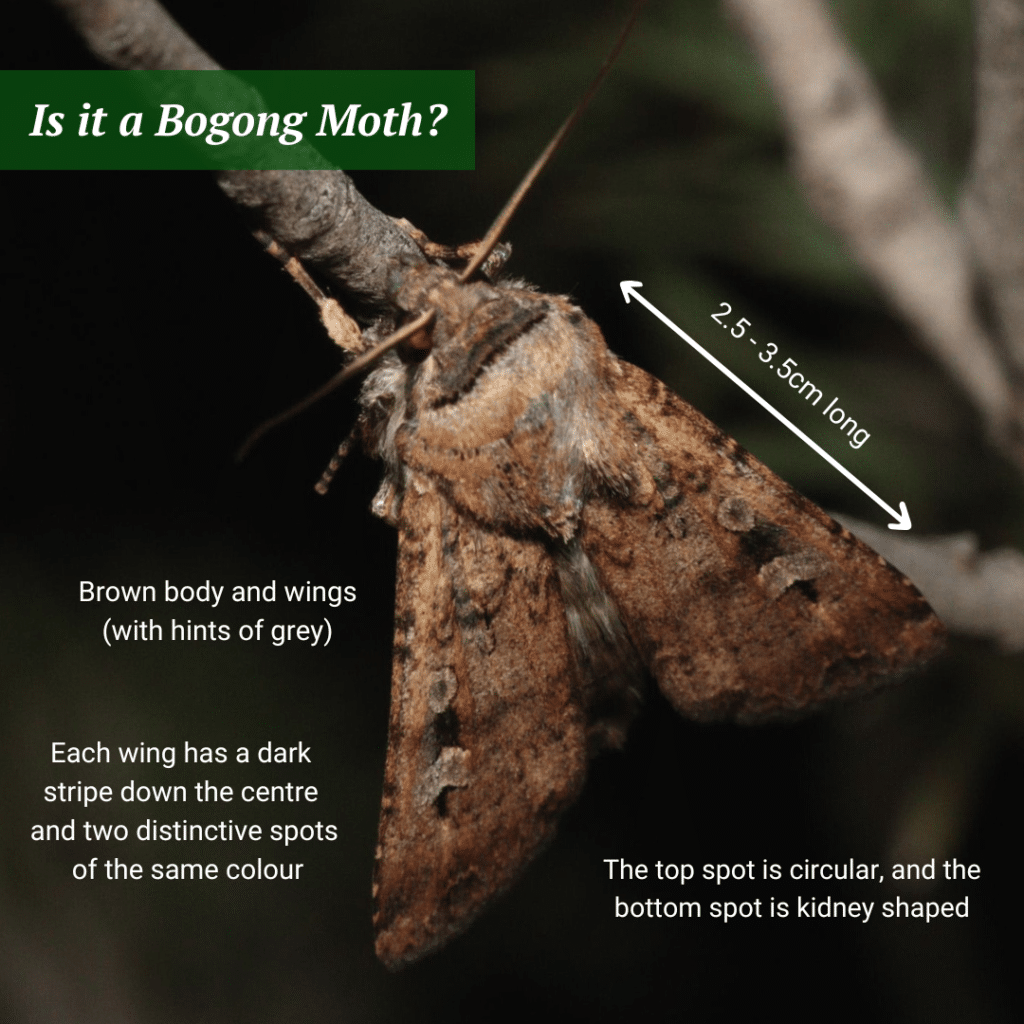Bogong Moth image with key identifiers. Image credit: Zoos Victoria – Moth Tracker – The Royal Society of Victoria (rsv.org.au)
The skies were filled with insects a few weeks ago in many parts of the Hunter region. HRLN uploaded a photo of one of 100s of moths encountered at this time to the Bogong Moth Tracker website. The photo is currently being verified. It’s easy to do and here’s why it matters…
Each spring, Bogong Moths (Agrotis infusa) start their epic migration journey of up to 1000 km, starting in southern Queensland, central NSW and western Victoria and ending in the Australian Alps.
Bogong Moths usually arrive in the mountains in their billions, providing a crucial influx of nutrients for all sorts of food chains. Mountain Pygmy-possums (Burramys parvus) wake up from their seven month hibernation in perfect time to feast on the Bogong Moths. In recent years there has been an estimated 99.5% collapse in the moth population and the species was added to the IUCN Endangered Species list in December 2021. Sadly, this decline has also put pressure on the Mountain Pygmy-possums who require sufficient nutrition to successfully raise young.
Why is the decline happening and what is being done? Bogong Moths are facing a number of threats, including extreme weather events, drought and climate change, light pollution on their migration routes, changed wide-scale agricultural practices and insecticides, predation by introduced species and habitat loss. Scientists are currently working hard to understand more about the decline and how to protect the species. We can all do our bit by knowing what the moths look like and keeping an eye out for them.
Moth Tracker is an easy to use website launched by Zoos Victoria where you can record Bogong Moth sightings. You can also get a moth ID if you are unsure if you have found a Bogong moth or not.
Moth Tracker (swifft.net.au) The moths are relatively small with a body length of 2.5-3.5 centimetres. They have a dark stripe running down each wing. There is a circular spot at the top of each stripe and a kidney-shaped spot at the bottom of the stripe (see photo above).
Other actions that help are turning off unnecessary outdoor lights to minimise light pollution which confuses moths on their migration. This simple act also prevents moths being drawn to lights where they may be more exposed to predation. Choose native flowers for gardens and parks and avoid using insecticides. The moths feed on the nectar of native flowers and pollinate plants along their migration routes. Surviving moths make the return journey back to their breeding grounds in autumn and also require native nectar along the way.
Further information can be found in this article from The Royal Society of Victoria: Moth Tracker – The Royal Society of Victoria (rsv.org.au)

